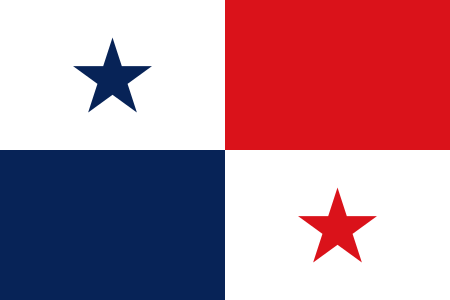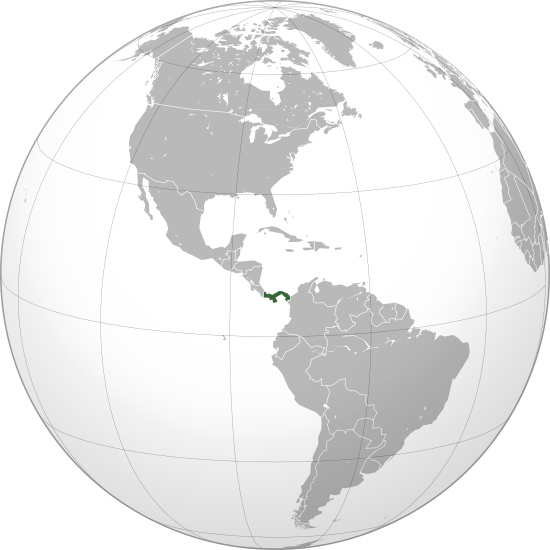 Panama (pronounced /ˈpænəmɑː/), officially the Republic of Panama (Spanish: República de Panamá; pronounced [reˈpuβlika ðe panaˈma]), is the southernmost country of both Central America and, in turn, North America.
Panama (pronounced /ˈpænəmɑː/), officially the Republic of Panama (Spanish: República de Panamá; pronounced [reˈpuβlika ðe panaˈma]), is the southernmost country of both Central America and, in turn, North America.
Situated on the isthmus connecting North and South America, it is bordered by Costa Rica to the northwest, Colombia to the southeast, the Caribbean Sea to the north and the Pacific Ocean to the south.The capital is Panama City.
Explored and settled by the Spanish in the 16th century, Panama broke with Spain in 1821 and joined a union of Colombia, Ecuador, and Venezuela – named the Republic of Gran Colombia. When the latter dissolved in 1830, Panama remained part of Colombia. With US backing, Panama seceded from Colombia in 1903.
The Panama Canal was built by the US Army Corps of Engineers between 1904 and 1914. In 1977, an agreement was signed for the complete transfer of the Canal from the US to Panama by the end of the century. Revenue from Canal tolls represent today a significant portion of Panama’s GDP.
Panama has the third or fourth largest economy in Central America. It is also the fastest growing economy and the largest per capita consumer in Central America.
Panama has the largest rainforest in the Western Hemisphere outside the Amazon Basin and its jungle is home to an abundance of tropical plants, animals and birds – some of them to be found nowhere else in the world.

Notes from Wikipedia








